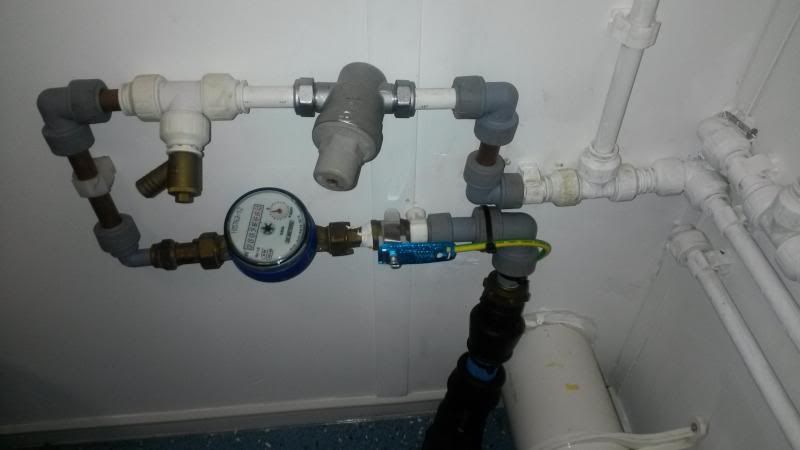Thanks for your input. The old gas pipe which was connected to the 'input' side of the old gas meter, and which is no longer in use and is no longer connected to anything in the house, does indeed travel through the ground outside. Only the pipe which was connected to the 'output' side of the gas meter, and is still connected to the rest of the gas pipe-work that is still in use, is bonded. Should the old gas pipe that is no longer in use also be bonded?
As EFLI and myself have said, theoretically
yes
Should I simply connect (electrically) the two pipes which used to be connected to the old gas meter?
Having a separate bit of cable connecting those two pipes would not technically be compliant with the regulations. However, it would be compliant to use the same cable (extended by joining {e.g. at the existing bonding clamp}, if necessary, even though some people moan that such is not 'good practice') to bond both pipes.
Don't forget that, as EFLI said originally, if your new outside gas meter is now supplied in plastic pipe, and the output pipe from it does not come into contact with ground, then that pipe (the 'in use' gas pipe now entering your house) does not need bonding, although it almost certainly does not harm to leave it connected. You could therefore theoretically
move the bonding cable from the 'in use' pipe to the old, now 'unused' one (illogical though that may seem - see below!) - but I would hesitate to suggest that you did remove the existing bonding without seeing the situation with my own eyes.
Somehow, that doesn't seem sensible to me, as the old pipe isn't connected to anything. In fact, were it not passing through a solid floor, I'd try to remove it!
I can understand it not sounding sensible, particularly when I suggest that one theoretical solution would be to remove bonding from the 'in use' pipework and connect it to the 'not-in-use' pipe! However, it all makes sense once one understands what main protective bonding is all about ....
... under certain, rare, fault conditions, the potential of your house's earthing system can rise to a voltage much higher than earth potential. That means that the touchable metal parts of many electrical items and appliances would rise to a high voltage above earth. If someone simultaneously touched one of those items and something connected to 'true earth', they therefore could suffer a serious electric shock, because of the potential difference between the two things they were touching.
To avoid that risk, the house is turned into an 'equipotential zone' (one of the names for main bonding is 'Protective Equipotential Bonding') so that such differences is potential cannot arise. This is achieved by connecting fairly fat bonding cables between the house's electrical system (at the 'MET' usually near {or in} the CU) and anything entering the house (like pipes) that could possibly be at 'true earth' potential. Having done that, the sort of dangerous differences in potential cannot arise. I understand that your old, unused, gas pipe does go through the ground, and is therefore probably close to true earth potential, and therefore would present a hazard if someone touched it at the same time as touching something else which was at a high potential above earth due to a fault.
You might well tell me that what is left of that old pipe could not be touched at the same time as anything else. The regulations requiring bonding of that old pipe do not make an exception about that but it would be up to you to decide to what extent you felt common sense should prevail. However, someone inspecting the electrical installation would expect to see that bonding of the unused pipe.
In considering the extent of the risk, remember that the 'in use' gas and water pipes are almost certainly connected to your house's electrical installation (and almost certainly would be even if you removed the theoretically unnecessary bonding to the 'in use' gas pipe). If it is possible to touch any of the in-use gas or water pipes at the same time as touching the old, not-in-use gas pipe (probably at true earth potential), then there
is a true risk, so that bonding of the not-in-use pipe would be very wise (as well as being required by regulations).
Hope that helps.
Kind Regards, John



